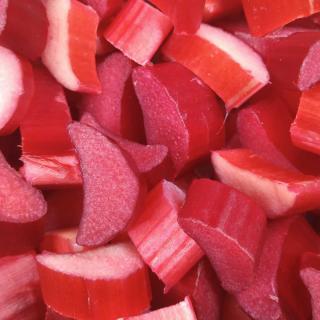

Native to Asia, rhubarb or Rheum rhaponticum is a perennial plant that boasts many health benefits and has a high therapeutic value.
Low in calorie intake and calcium-rich, rhubarb is a prize ingredient in many desserts.
Due to its tartness and stringiness, rhubarb is almost always consumed cooked. When cooked, its flesh is melting and tangy.
In olden times, rhubarb roots were consumed for their laxative properties instead of their petioles.
Rhubarb infusion – 1/6 to ⅓ oz (5 to 10 g) dried powdered rhubarb for ¼ quart (¼ liter) boiling water. Drink as a purgative in the morning before eating. Alternatively, prepare an unheated maceration with twice the dose.
Powdered rhubarb root – 0.04 to 0.15 oz (1 to 4 g) for purgative use and 0.02 oz (0.5 g) for use as digestive tonic.
Rhubarb tincture – 7 oz (200 g) crushed and chopped rhubarb. Macerate for 10 days in 1 quart (1 liter) 60% (volume) alcohol. Stir from time to time, then filter. 0.04 to 0.15 oz (1 to 4 g) for use as tonic, ⅓ to ½ oz (10 to 15 g) for use as a purgative.
Rhubarb wine – macerate 2 oz (60 g) of roots for 10 days in 1 quart (1 liter) Grenache wine. Ingest one or two table spoons for purgative use.
Rhubarb syrup – prepared with rhubarb, chicory, Chinese lantern (perennial ornamental plant with an orange-colored fruit), fumewort (medicinal herb that impacts digestive functions, specifically the gall bladder) and cinnamon. This syrup is also referred to as “mixed chicory syrup”.
Rhubarb flower decoction or powdered root decoction: such decoctions were used in the old days to lighten hair color and turn their color blond.
To grow well, rhubarb requires rich, thick, cool, acidic and humus-rich soil. Best exposure: preferably full sun.
Never ingest rhubarb leaves. They contain oxalic acid that can lead to severe food poisoning.
Beekeepers can use this to their advantage:
- spread a leaf inside the hive, atop your frames.
- As they chew it up to remove it, bees ingest tiny amounts of oxalic acid which helps them fight off Varroa mite.
 Rhubarb is rich in organic acids, fibers, calcium and magnesium. Rhubarb also has laxative properties.
Rhubarb is rich in organic acids, fibers, calcium and magnesium. Rhubarb also has laxative properties.
Rhubarb petioles are succulent with sugar (like fruits) or lightly fried with butter. Excellent pies, crumbles, sauces and jams can be prepared from rhubarb.
<!–silent
–>
Honey-caramelized rhubarb to serve as a side for pork tenderloin… Hmm, that’s mouth-watering!
Blandine Merlin
Not only is this excellent for us humans! Rhubarb makes excellent fermented tea material for plants, too!